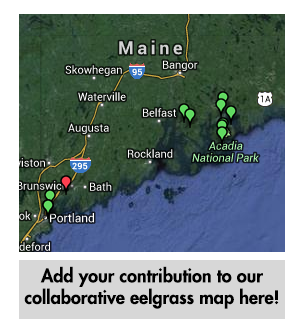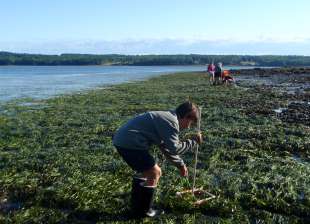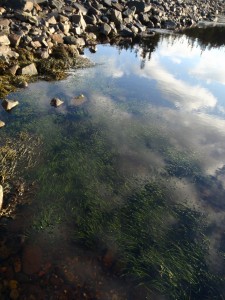Eelgrass in Maine is now closed to new submissions. To share what you’re seeing in the natural world, you can now create an account at CEHL’s new collaborative nature journal, Anecdata!
 Scientists, interns, and volunteers at the Mount Desert Island Biological Laboratory (MDIBL) have been successfully restoring eelgrass in Frenchman Bay with community partners for six years. But this year, the marine plant didn’t come up, and not just in restored areas. Eelgrass throughout the upper bay didn’t seem to get its annual signal to send up shoots, and only rhizomes remain in the mud where eelgrass beds had been.
Scientists, interns, and volunteers at the Mount Desert Island Biological Laboratory (MDIBL) have been successfully restoring eelgrass in Frenchman Bay with community partners for six years. But this year, the marine plant didn’t come up, and not just in restored areas. Eelgrass throughout the upper bay didn’t seem to get its annual signal to send up shoots, and only rhizomes remain in the mud where eelgrass beds had been.
In order to find out the extent of this event along the coast of Maine, MDIBL is asking the public to look for eelgrass beds and report their locations, or where they missing from places where there had been beds in the past. The lab is asking people to search for the plant as soon as possible, because eelgrass’s growing season usually ends in August. Continue reading



